Program Notes
We thank Kate Morics for her hard work in advance for writing these notes!
Serenade in Eb Major, K. 375 by W.A. Mozart (1756-1791)
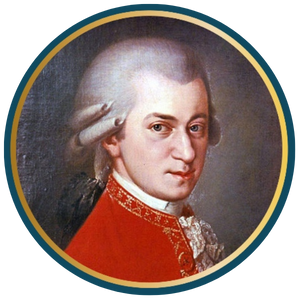 Wolfgang Amadeus Mozart (1756-1791) wrote his Serenade in Eb Major in October 1781 for St. Theresa’s day. The first version of the Serenade, originally scored as a sextet for two clarinets, two bassoons, and two horns, premiered about nine months after the composer moved to Vienna. According to letters he wrote to his father, violinist and composer Leopold Mozart (1719-1787), he initially wrote the piece as a way to build connections with members of the Austrian court, as the piece premiered in the home of court painter Joseph Hickel. In 1782, the piece was re-scored as an octet with the addition of two oboes. At the time, the Harmonie (established wind ensemble) Emperor Joseph II had in his employ was a wind octet – this no doubt was a motivating factor in the ambitious young composer’s decision to rearrange the piece.
Wolfgang Amadeus Mozart (1756-1791) wrote his Serenade in Eb Major in October 1781 for St. Theresa’s day. The first version of the Serenade, originally scored as a sextet for two clarinets, two bassoons, and two horns, premiered about nine months after the composer moved to Vienna. According to letters he wrote to his father, violinist and composer Leopold Mozart (1719-1787), he initially wrote the piece as a way to build connections with members of the Austrian court, as the piece premiered in the home of court painter Joseph Hickel. In 1782, the piece was re-scored as an octet with the addition of two oboes. At the time, the Harmonie (established wind ensemble) Emperor Joseph II had in his employ was a wind octet – this no doubt was a motivating factor in the ambitious young composer’s decision to rearrange the piece.
Today, you will hear the octet version of the Serenade, whose Eb major key is firmly established in the first four measures of the stately Allegro maestoso, which feature a triumphant repetition of the tonic chord. Mozart’s characteristic elegant use of established Classical forms is evident in his ability to distinguish each movement while staying firmly within the home key of Eb major. The clarinet introduces the theme in the pensive Adagio, which ends quietly with a coda featuring the oboe. The following Minuet begins with a jovial dance between the upper and lower winds, which gives way to a lighter and more playful trio section, before returning to the primary theme. The final Allegro provides plenty of opportunities for virtuosity as the melodic runs in each part propel the piece to its satisfying conclusion.
Waltz No. 2 from the Suite for Variety Orchestra by D. Shostakovich (1906-1975), arranged by S. Verhaert
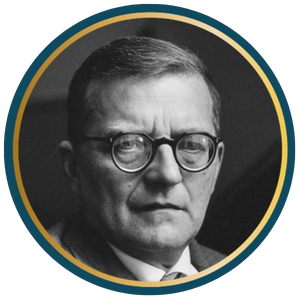 Dimitri Shostakovich (1906-1975) was one of the most prolific Soviet-era Russian composers of the 20th century. His unique compositional style and approach to tonality, as well as his complicated relationship with the Soviet government, has led to his work being admired by audiences and scholars alike. This waltz appears as part of a larger suite comprised of a number of the composer’s previous works. The London Symphony, under Mstislav Rostropovich, premiered the collection previously misidentified as Jazz Suite No. 2, as the Suite for Variety Orchestra in 1988. The suite’s Waltz No. 2 originally appeared as part of the composer’s original score for the 1955 Soviet film The First Echelon. American audiences may remember the waltz from its appearance in the opening sequence of Stanley Kubrick’s 1999 film Eyes Wide Shut. The Waltz demonstrates the contrasts that characterize much of Shostakovich’s work – composed in a ternary ABA form, the C-minor A sections feature a melancholy minor-key melody that feels almost timid. This timidness is absent from the confident B section, which moves between Eb and Ab major, before returning quietly to the minor theme in the final A section. The version being performed today was arranged for wind quintet by composer and trumpet player Steven Verhaert, and is being performed today as a wind quintet.
Dimitri Shostakovich (1906-1975) was one of the most prolific Soviet-era Russian composers of the 20th century. His unique compositional style and approach to tonality, as well as his complicated relationship with the Soviet government, has led to his work being admired by audiences and scholars alike. This waltz appears as part of a larger suite comprised of a number of the composer’s previous works. The London Symphony, under Mstislav Rostropovich, premiered the collection previously misidentified as Jazz Suite No. 2, as the Suite for Variety Orchestra in 1988. The suite’s Waltz No. 2 originally appeared as part of the composer’s original score for the 1955 Soviet film The First Echelon. American audiences may remember the waltz from its appearance in the opening sequence of Stanley Kubrick’s 1999 film Eyes Wide Shut. The Waltz demonstrates the contrasts that characterize much of Shostakovich’s work – composed in a ternary ABA form, the C-minor A sections feature a melancholy minor-key melody that feels almost timid. This timidness is absent from the confident B section, which moves between Eb and Ab major, before returning quietly to the minor theme in the final A section. The version being performed today was arranged for wind quintet by composer and trumpet player Steven Verhaert, and is being performed today as a wind quintet.
Trio for Flute, Horn, and Piano by E. Ewazen
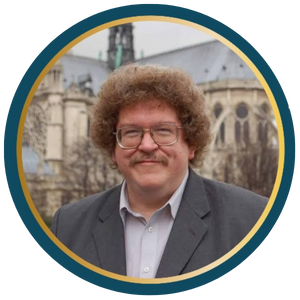 Eric Ewazen (1954 – ) is an American composer and music theorist currently serving on the faculty at The Juilliard School, where he received his DMA. His compositions often feature unique combinations of instruments, and sound at once classical and contemporary due to his innovative approach to tonality and timbre. Ewazen’s characteristic combination of classical and contemporary is demonstrated in his Trio for Flute, Horn, and Piano. The piece’s three movements feature titles that reference their familiar musical forms – Ballade, Pastorale, and Dance. The third movement, Dance, will be performed today. The energetic Dance features a vibrant primary theme introduced first by the flute. This primary theme returns throughout the piece between periods of development, in which Ewazen introduces faintly ominous melodic material, emphasized by the rumbling piano line under the dancing wind instruments, as a contrast to the bright and cheerful primary melody. A secondary melody opening with triumphant descending fourths in the flute and horn is introduced halfway through the movement, which returns shortly before the flute and horn join together in a final, joyful unison statement of the primary theme to conclude the piece.
Eric Ewazen (1954 – ) is an American composer and music theorist currently serving on the faculty at The Juilliard School, where he received his DMA. His compositions often feature unique combinations of instruments, and sound at once classical and contemporary due to his innovative approach to tonality and timbre. Ewazen’s characteristic combination of classical and contemporary is demonstrated in his Trio for Flute, Horn, and Piano. The piece’s three movements feature titles that reference their familiar musical forms – Ballade, Pastorale, and Dance. The third movement, Dance, will be performed today. The energetic Dance features a vibrant primary theme introduced first by the flute. This primary theme returns throughout the piece between periods of development, in which Ewazen introduces faintly ominous melodic material, emphasized by the rumbling piano line under the dancing wind instruments, as a contrast to the bright and cheerful primary melody. A secondary melody opening with triumphant descending fourths in the flute and horn is introduced halfway through the movement, which returns shortly before the flute and horn join together in a final, joyful unison statement of the primary theme to conclude the piece.
Berceuse for Piccolo, English Horn, and Piano by M. Matthys
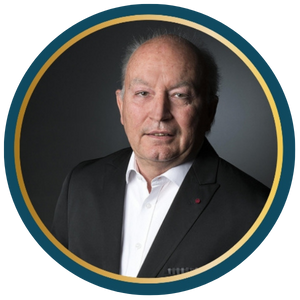 Belgian composer Marc Matthys (1956 – ) was classically trained in piano performance and chamber music, and currently composes in classical, jazz, and popular styles. The delightful Berceuse being performed today fits neatly within the classical compositional style. The berceuse is a lullaby form popularized by Polish composer Frédéric Chopin (1810-1849), and later utilized by such late Romantic and 20th-century composers as Jean Sibelius (1965-1957) and Gabriel Fauré (1845-1924). Like most berceuses, this piece is relatively harmonically simple and composed in a slow 6/8 time. The piano begins the piece by introducing the melodic theme over gentle chords alternating between the tonic and the dominant. The theme is then passed to the horn, and then the piccolo, before the two instruments share the melody. A piano solo in the middle section provides a tonal shift, which is resolved by the return of the main theme in the horn, ornamented by the piccolo. The piece ends as it began, with a quiet conclusion in the solo piano. Throughout the piece, the brightness of the piccolo’s sound provides a pleasing contrast to the more understated tones of the horn and piano.
Belgian composer Marc Matthys (1956 – ) was classically trained in piano performance and chamber music, and currently composes in classical, jazz, and popular styles. The delightful Berceuse being performed today fits neatly within the classical compositional style. The berceuse is a lullaby form popularized by Polish composer Frédéric Chopin (1810-1849), and later utilized by such late Romantic and 20th-century composers as Jean Sibelius (1965-1957) and Gabriel Fauré (1845-1924). Like most berceuses, this piece is relatively harmonically simple and composed in a slow 6/8 time. The piano begins the piece by introducing the melodic theme over gentle chords alternating between the tonic and the dominant. The theme is then passed to the horn, and then the piccolo, before the two instruments share the melody. A piano solo in the middle section provides a tonal shift, which is resolved by the return of the main theme in the horn, ornamented by the piccolo. The piece ends as it began, with a quiet conclusion in the solo piano. Throughout the piece, the brightness of the piccolo’s sound provides a pleasing contrast to the more understated tones of the horn and piano.
Pavane by M. Gould (1913-1996), arranged by R. Sheldon
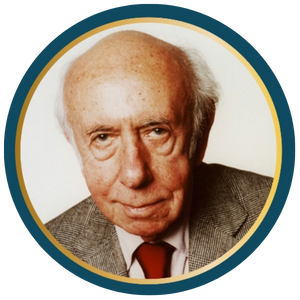 Morton Gould (1913-1996) was an American composer who was prolific throughout the 1930s and 1940s. Comfortable with both classical and vernacular forms of composition, Gould composed for radio, television, film, and broadway. This Pavane originally appeared as part of a larger orchestral work, American Symphonette No. 2, originally composed for a radio show in 1938. The Pavane, originally the Symphonette’s second movement, is perhaps the work’s most popular movement, and it demonstrates Gould’s ability to draw on classical as well as popular musical styles. The title and form of the movement reference its classical influences – the pavane is a stately processional dance, often composed in a slow duple meter, popular in 16th century European courts. In this quintet version of the Pavane, arranged by Robert E. Sheldon, the oboe introduces the charming principal melody over a jaunty bass line provided by the bassoon and assisted by the French horn. A secondary rhythmic motif is introduced by the ensemble in the secondary section of the movement, which adds texture to the oboe’s restatement of the melody in the conclusion. Throughout the piece, listeners will recognize Gould’s jazz influences in his harmonies, as well as the syncopation of the melodic lines.
Morton Gould (1913-1996) was an American composer who was prolific throughout the 1930s and 1940s. Comfortable with both classical and vernacular forms of composition, Gould composed for radio, television, film, and broadway. This Pavane originally appeared as part of a larger orchestral work, American Symphonette No. 2, originally composed for a radio show in 1938. The Pavane, originally the Symphonette’s second movement, is perhaps the work’s most popular movement, and it demonstrates Gould’s ability to draw on classical as well as popular musical styles. The title and form of the movement reference its classical influences – the pavane is a stately processional dance, often composed in a slow duple meter, popular in 16th century European courts. In this quintet version of the Pavane, arranged by Robert E. Sheldon, the oboe introduces the charming principal melody over a jaunty bass line provided by the bassoon and assisted by the French horn. A secondary rhythmic motif is introduced by the ensemble in the secondary section of the movement, which adds texture to the oboe’s restatement of the melody in the conclusion. Throughout the piece, listeners will recognize Gould’s jazz influences in his harmonies, as well as the syncopation of the melodic lines.
Trio for Trumpet, Violin, and Piano by E. Ewazen
 The trumpet is not often seen in chamber music, as the trumpet’s boisterous nature may be assumed to be at odds with the intimacy of chamber music. However, the trumpet feels at home in this richly lyrical trio by Eric Ewazen (1954 – ). Ewazen confronts the challenge of blending the starkly different timbres of the trumpet and violin by having both instruments play with and without mutes at various points throughout the movement, which begins with the muted trumpet introducing the primary theme over alternating octaves, fifths, and fourths in the violin and ethereal trills in the piano. The tranquility of the opening theme is challenged by the middle section, in which Ewazen shifts to a more somber tone. Tension is built throughout this section, as melodic lines shared by the trumpet and violin respond to rumbling figures in the piano. Ewazen’s constant shifts in meter further emphasizes this tension, which is resolved by the return of the primary theme in the movement’s conclusion. Here, the violin and trumpet have switched places – the violin re-states the primary theme in lush octave double-stops over the muted trumpet’s alternating intervals before the piano quietly closes the movement.
The trumpet is not often seen in chamber music, as the trumpet’s boisterous nature may be assumed to be at odds with the intimacy of chamber music. However, the trumpet feels at home in this richly lyrical trio by Eric Ewazen (1954 – ). Ewazen confronts the challenge of blending the starkly different timbres of the trumpet and violin by having both instruments play with and without mutes at various points throughout the movement, which begins with the muted trumpet introducing the primary theme over alternating octaves, fifths, and fourths in the violin and ethereal trills in the piano. The tranquility of the opening theme is challenged by the middle section, in which Ewazen shifts to a more somber tone. Tension is built throughout this section, as melodic lines shared by the trumpet and violin respond to rumbling figures in the piano. Ewazen’s constant shifts in meter further emphasizes this tension, which is resolved by the return of the primary theme in the movement’s conclusion. Here, the violin and trumpet have switched places – the violin re-states the primary theme in lush octave double-stops over the muted trumpet’s alternating intervals before the piano quietly closes the movement.
Quintet in Bb Major by N. Rimsky-Korsakov
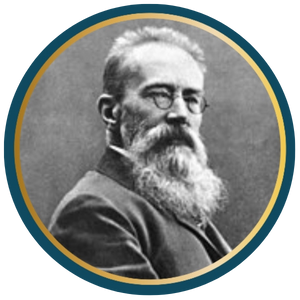 Nikolai Andreyevich Rimsky-Korsakov (1844 – 1908) was a prominent Russian composer perhaps most well-known today for his orchestral works, such as Scheherazade (1888). As a nationalist composer, Rimsky-Korsakov shied away from excess and heavy experimentation in his compositions, choosing instead to rely on established forms. His Quintet for Piano and Winds in Bb Major was written in 1876 for a competition held by the Russian Musical Society. According to his own autobiography, Rimsky-Korsakov wrote the first movement of this quintet “in the classic style of Beethoven.” This style can be observed in the movement’s sonata form, a musical structure that Ludwig van Beethoven (1770-1827) utilized and experimented with frequently in his symphonic and chamber music compositions. Beethoven’s influence can also be heard in the Allegro’s extensive motivic development. The cheerful movement begins with a primary theme that is passed around between each instrument. The eighth-note pattern in this theme becomes a motif that is repeated throughout the movement, particularly in the development section, in which Rimsky-Korsakov deftly moves the eighth-note pattern through different keys as it is passed between each instrument. After a recapitulation of the primary theme, the piece concludes with a brief coda featuring an almost fugue-like dance in which the primary theme is passed from one instrument to the other until they come together in a final conclusive statement of the theme to finish the movement.
Nikolai Andreyevich Rimsky-Korsakov (1844 – 1908) was a prominent Russian composer perhaps most well-known today for his orchestral works, such as Scheherazade (1888). As a nationalist composer, Rimsky-Korsakov shied away from excess and heavy experimentation in his compositions, choosing instead to rely on established forms. His Quintet for Piano and Winds in Bb Major was written in 1876 for a competition held by the Russian Musical Society. According to his own autobiography, Rimsky-Korsakov wrote the first movement of this quintet “in the classic style of Beethoven.” This style can be observed in the movement’s sonata form, a musical structure that Ludwig van Beethoven (1770-1827) utilized and experimented with frequently in his symphonic and chamber music compositions. Beethoven’s influence can also be heard in the Allegro’s extensive motivic development. The cheerful movement begins with a primary theme that is passed around between each instrument. The eighth-note pattern in this theme becomes a motif that is repeated throughout the movement, particularly in the development section, in which Rimsky-Korsakov deftly moves the eighth-note pattern through different keys as it is passed between each instrument. After a recapitulation of the primary theme, the piece concludes with a brief coda featuring an almost fugue-like dance in which the primary theme is passed from one instrument to the other until they come together in a final conclusive statement of the theme to finish the movement.



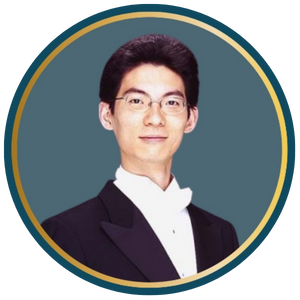 Dr. Zun-Hin Woo attended the University of Oklahoma in Norman and obtained his B.M. in Violin Performance and earned his M.M. degree in Orchestral Conducting at the University of Missouri in Columbia. Dr. Woo has performed and worked for the Hong Kong Virtuosi, Hong Kong Sinfonietta, Concerto da Camera, Sichuan Symphony, Shenzhen Symphony, the Open University in Hong King, King’s College, Hong Kong Medical Association Orchestra, La Salle College and Wah Yan College, Danse a Lili Ballet Academy, Songsingers Choir, European Folk-Legacy Dance Troupe, and Hong Kong City Opera. Professor Woo is currently the Associate Conductor of the Symphony Irvine and the Temecula Valley Symphony where he also serves as the concertmaster and conducts the Temecula Valley Youth Symphony. He is also an adjunct professor at Fullerton College, where he conducts the orchestra, teaches violin and music theory courses.
Dr. Zun-Hin Woo attended the University of Oklahoma in Norman and obtained his B.M. in Violin Performance and earned his M.M. degree in Orchestral Conducting at the University of Missouri in Columbia. Dr. Woo has performed and worked for the Hong Kong Virtuosi, Hong Kong Sinfonietta, Concerto da Camera, Sichuan Symphony, Shenzhen Symphony, the Open University in Hong King, King’s College, Hong Kong Medical Association Orchestra, La Salle College and Wah Yan College, Danse a Lili Ballet Academy, Songsingers Choir, European Folk-Legacy Dance Troupe, and Hong Kong City Opera. Professor Woo is currently the Associate Conductor of the Symphony Irvine and the Temecula Valley Symphony where he also serves as the concertmaster and conducts the Temecula Valley Youth Symphony. He is also an adjunct professor at Fullerton College, where he conducts the orchestra, teaches violin and music theory courses.  Kate Prestia-Schaub’s beloved teachers were Maralyn Prestia, Jim Walker, and Tom Robertello. She received her bachelors in flute performance from Indiana University, and her masters at University of Southern California. She is a Powell Flutes artist, founder of the West Coast Wind Quintet, and principal flute in the Temecula Valley Symphony. She’s on faculty at Idyllwild Arts Academy teaching winds performance and chamber music, and she has a thriving flute studio “K8trills”. You can find her acclaimed piccolo recording Timeless, performed with her friend and composer Martin Kennedy, on major streaming services. She is past president of MTAC – Temecula Valley Branch) and San Diego Flute Guild; and she has served on advisory boards for California Chamber Orchestra, Temecula Valley Symphony, and National Flute Association. www.k8trills.com
Kate Prestia-Schaub’s beloved teachers were Maralyn Prestia, Jim Walker, and Tom Robertello. She received her bachelors in flute performance from Indiana University, and her masters at University of Southern California. She is a Powell Flutes artist, founder of the West Coast Wind Quintet, and principal flute in the Temecula Valley Symphony. She’s on faculty at Idyllwild Arts Academy teaching winds performance and chamber music, and she has a thriving flute studio “K8trills”. You can find her acclaimed piccolo recording Timeless, performed with her friend and composer Martin Kennedy, on major streaming services. She is past president of MTAC – Temecula Valley Branch) and San Diego Flute Guild; and she has served on advisory boards for California Chamber Orchestra, Temecula Valley Symphony, and National Flute Association. www.k8trills.com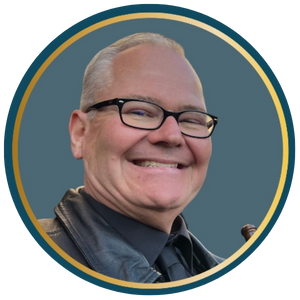 Rick Olsen has been an integral part of the TVS community for years, and always brings a laugh and a smile to rehearsal.
Rick Olsen has been an integral part of the TVS community for years, and always brings a laugh and a smile to rehearsal.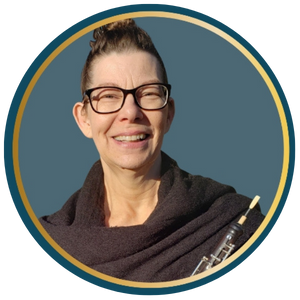 Viki Bertram, a busy oboist from Northern California, has been performing in orchestras, wind ensembles, chamber ensembles, and musicals since middle school. At age 15, her decades-long participation in musical theater orchestras began with The Mikado. She has performed regularly while working outside of the music field, at times, using her music to assist individuals with severe mental illnesses increase social interaction and confidence. To support future live music performance at all ages, Viki teaches beginning oboists and is the wind ensemble librarian for Symphonic Winds of the Pacific.
Viki Bertram, a busy oboist from Northern California, has been performing in orchestras, wind ensembles, chamber ensembles, and musicals since middle school. At age 15, her decades-long participation in musical theater orchestras began with The Mikado. She has performed regularly while working outside of the music field, at times, using her music to assist individuals with severe mental illnesses increase social interaction and confidence. To support future live music performance at all ages, Viki teaches beginning oboists and is the wind ensemble librarian for Symphonic Winds of the Pacific.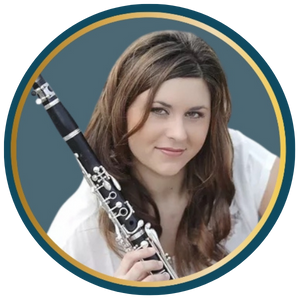 Shelby Huber is a professional clarinetist based in Southern California. Playing the clarinet for over 25 years, she is a versatile musician and has performed in various Orchestras, Operas, musicals, and chamber ensembles. Shelby received a Bachelor of Music in Clarinet performance from California State University Northridge in 2007 where she studied with Dr. Julia Heinen. She is currently the Assistant Principal Clarinetist of the Temecula Valley Symphony, and performs frequently with the Fine Arts Network. Additionally she has been Assistant Principal Clarinetist for the Valley Opera and Performing Arts Company, which she has been a member of for over 15 years. One of her most memorable performances to date is when she had the opportunity to perform on the Grammys in 2020 with Ariana Grande!
Shelby Huber is a professional clarinetist based in Southern California. Playing the clarinet for over 25 years, she is a versatile musician and has performed in various Orchestras, Operas, musicals, and chamber ensembles. Shelby received a Bachelor of Music in Clarinet performance from California State University Northridge in 2007 where she studied with Dr. Julia Heinen. She is currently the Assistant Principal Clarinetist of the Temecula Valley Symphony, and performs frequently with the Fine Arts Network. Additionally she has been Assistant Principal Clarinetist for the Valley Opera and Performing Arts Company, which she has been a member of for over 15 years. One of her most memorable performances to date is when she had the opportunity to perform on the Grammys in 2020 with Ariana Grande!  Zachary Nichols attended the University of North Texas where he obtained his B.M. in Music Education. At UNT he met and ultimately married Kristy, a fellow clarinetist that he continues to perform with today. Zach has played in various pit orchestras in Sonoma, Napa, and Mendocino Counties, as well as several ensembles in Southern California such as the OC Symphony, OC Wind Symphony, Corona Symphony, and Dana Point Symphony. Zach is a member of the Orange County Clarinet Consort that has performed at several ICA Clarinet Fests in Italy and other US locations, and this year will play in Denver.
Zachary Nichols attended the University of North Texas where he obtained his B.M. in Music Education. At UNT he met and ultimately married Kristy, a fellow clarinetist that he continues to perform with today. Zach has played in various pit orchestras in Sonoma, Napa, and Mendocino Counties, as well as several ensembles in Southern California such as the OC Symphony, OC Wind Symphony, Corona Symphony, and Dana Point Symphony. Zach is a member of the Orange County Clarinet Consort that has performed at several ICA Clarinet Fests in Italy and other US locations, and this year will play in Denver.  Dr. Tom Schubert, bassoon, is an active freelance musician in the San Diego area. In addition to the Temecula Valley Symphony, he is principal bassoon in the La Jolla Symphony. He has a great love for chamber music and pit orchestras (ballet, opera, & musical theater). Tom plays a Heckel bassoon from 1956 that has been a treasured companion since 1974. Now a retired engineering educator, his formal bassoon study consisted of intense stints with Frederick Moritz, Norman Herzberg, Kay Brightman, and Loren Glickman. He attributes his musical sense to those many talented musicians with whom he has played over these many years.
Dr. Tom Schubert, bassoon, is an active freelance musician in the San Diego area. In addition to the Temecula Valley Symphony, he is principal bassoon in the La Jolla Symphony. He has a great love for chamber music and pit orchestras (ballet, opera, & musical theater). Tom plays a Heckel bassoon from 1956 that has been a treasured companion since 1974. Now a retired engineering educator, his formal bassoon study consisted of intense stints with Frederick Moritz, Norman Herzberg, Kay Brightman, and Loren Glickman. He attributes his musical sense to those many talented musicians with whom he has played over these many years. 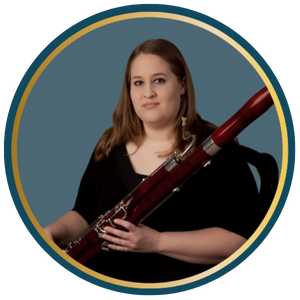 Katherine Ortega began playing the bassoon at age 13. She received her bachelor degree in music from the University of Southern California in 2008, where she studied with Judith Farmer. In 2010, she completed her master’s degree at the Chicago College of Performing Arts, studying under Dennis Michel. Katherine also received instruction from Rose Corrigan, David McGill and Ted Soluri during her education. Katherine currently lives in Temecula, where she freelances and teaches private lessons. She also does studio work and has recorded for television shows such as Eureka and The Walking Dead. Katherine particularly enjoys playing in various chamber ensembles.
Katherine Ortega began playing the bassoon at age 13. She received her bachelor degree in music from the University of Southern California in 2008, where she studied with Judith Farmer. In 2010, she completed her master’s degree at the Chicago College of Performing Arts, studying under Dennis Michel. Katherine also received instruction from Rose Corrigan, David McGill and Ted Soluri during her education. Katherine currently lives in Temecula, where she freelances and teaches private lessons. She also does studio work and has recorded for television shows such as Eureka and The Walking Dead. Katherine particularly enjoys playing in various chamber ensembles.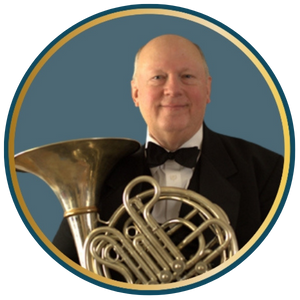 Dr. Bruce Clausen began his studies in high school with James Winter, who was a protégé of Philip Farkas, the principal hornist of the Chicago Symphony under Fritz Reiner. He earned a bachelor’s in horn performance, a master’s in composition, and a Ph.D. in musicology (Beethoven studies) at The University of Southern California. At USC he studied with Wendell Hoss, one of the founders of the Los Angeles Horn Club, and the great James Decker, whose recordings for Igor Stravinsky and Bruno Walter are legendary. Currently, Bruce is the principal hornist with the Temecula Valley Symphony, the Coachella Valley Symphony, and the i.e. Brass Quintet. Bruce has served as president of the USC Thornton School of Music Alumni Association, and received the Brandon Merhle Special Commendation Award from the school and the Widney Alumni House Award from the university.
Dr. Bruce Clausen began his studies in high school with James Winter, who was a protégé of Philip Farkas, the principal hornist of the Chicago Symphony under Fritz Reiner. He earned a bachelor’s in horn performance, a master’s in composition, and a Ph.D. in musicology (Beethoven studies) at The University of Southern California. At USC he studied with Wendell Hoss, one of the founders of the Los Angeles Horn Club, and the great James Decker, whose recordings for Igor Stravinsky and Bruno Walter are legendary. Currently, Bruce is the principal hornist with the Temecula Valley Symphony, the Coachella Valley Symphony, and the i.e. Brass Quintet. Bruce has served as president of the USC Thornton School of Music Alumni Association, and received the Brandon Merhle Special Commendation Award from the school and the Widney Alumni House Award from the university. 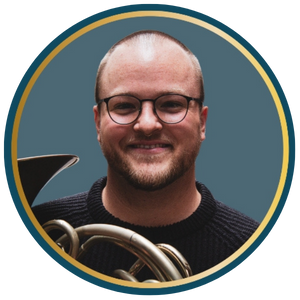 Jeff Gumpertz is an Orange County based hornist and educator. He received his Bachelor of Music from California State University, Fullerton in 2019 and his Masters of Music from the Royal Conservatoire of Scotland in 2021. He has performed with the BBC Scottish Symphony Orchestra, Scottish Chamber Orchestra, Royal Scottish National Orchestra, and the Royal Philharmonic Orchestra and is an active freelancer throughout Southern California.
Jeff Gumpertz is an Orange County based hornist and educator. He received his Bachelor of Music from California State University, Fullerton in 2019 and his Masters of Music from the Royal Conservatoire of Scotland in 2021. He has performed with the BBC Scottish Symphony Orchestra, Scottish Chamber Orchestra, Royal Scottish National Orchestra, and the Royal Philharmonic Orchestra and is an active freelancer throughout Southern California.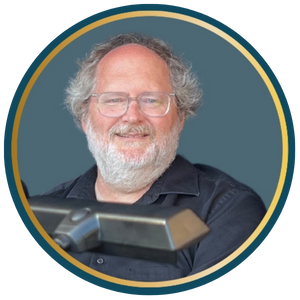 Dr. Steve Morics is Professor and Chair of Mathematics at the University of Redlands. He plays trumpet in many styles, and in many venues, from playing principal trumpet for the Charlottesville University Symphony Orchestra while pursuing his PhD, to The Messiah in Walt Disney Concert Hall, to the pit for In the Heights and Sister Act at local community colleges. He’s played with the Faculty Brass Quintet and on three students’ Masters recitals at Redlands, and soloed twice with the Redlands Community Orchestra. Just before the pandemic, he was able to blend his musical and mathematical interests by teaching a class on Mathematics and Music in Salzburg, Austria.
Dr. Steve Morics is Professor and Chair of Mathematics at the University of Redlands. He plays trumpet in many styles, and in many venues, from playing principal trumpet for the Charlottesville University Symphony Orchestra while pursuing his PhD, to The Messiah in Walt Disney Concert Hall, to the pit for In the Heights and Sister Act at local community colleges. He’s played with the Faculty Brass Quintet and on three students’ Masters recitals at Redlands, and soloed twice with the Redlands Community Orchestra. Just before the pandemic, he was able to blend his musical and mathematical interests by teaching a class on Mathematics and Music in Salzburg, Austria. Pei-Ying Li Vedad Haghi: Originally from Taiwan, Pei-Ying Li came to the United States to further her education at the prestigious New England Conservatory of Music (NEC) in Boston. Pei-Ying has a Master of Music and Graduate Diploma from NEC and a Master of Music degree from Tainan National University of the Art in Taiwan. She has also attended several music festivals under scholarship and apprenticeship offerings, such as the Franz Schubert Institute (Austria), Vancouver International Song Institute (Canada), Vancouver Opera Studio (Canada) and Mountain View International Festival of Song and Chamber Music (Canada). Pei-Ying has a wide background of experience: teaching classes for the musically gifted in Junior High School and Junior College in Taiwan as well as piano and violin and collaborative piano.
Pei-Ying Li Vedad Haghi: Originally from Taiwan, Pei-Ying Li came to the United States to further her education at the prestigious New England Conservatory of Music (NEC) in Boston. Pei-Ying has a Master of Music and Graduate Diploma from NEC and a Master of Music degree from Tainan National University of the Art in Taiwan. She has also attended several music festivals under scholarship and apprenticeship offerings, such as the Franz Schubert Institute (Austria), Vancouver International Song Institute (Canada), Vancouver Opera Studio (Canada) and Mountain View International Festival of Song and Chamber Music (Canada). Pei-Ying has a wide background of experience: teaching classes for the musically gifted in Junior High School and Junior College in Taiwan as well as piano and violin and collaborative piano. 


